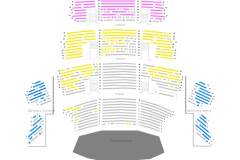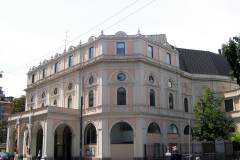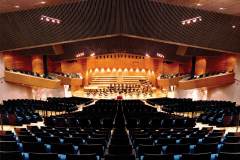Steve Hackett|Genesis Greats, Lamb Highlights and Solo
Mo | Tu | We | Th | Fr | Sa | Su |
After the enormous success of his last tour in our country, the legendary Genesis guitarist Steve Hackett returns by popular demand with the show Steve Hackett Genesis Greats, Lamb Highlights & Solo.
On the occasion of the 50th anniversary of The Lamb Lies Down On Broadway, Hackett will present a selection of tracks from this iconic Genesis album during the concert.
Steve Hackett's extraordinary work has spanned the entire classic catalog of Genesis albums from the 1970s.
In recent years, he and his extraordinary lineup, consisting of Roger King (keyboards), Nad Sylvan (vocals), Jonas Reingold (bass, backing vocals), Rob Townsend (saxophone, flutes, additional keyboards), and Craig Blundell (drums), have successfully brought many of these albums back to concert halls.
Special guest Amanda Lehmann will join the entire tour on guitar and vocals. What better way to celebrate half a century of this extraordinary album than by including a selection of Lamb Highlights alongside some of Hackett's best solo works and the unmissable Genesis Greats.
“I can't wait to start the 2024 tour,” says Steve Hackett, “including the favorite tracks from ‘The Lamb Lies Down on Broadway’ and other iconic Genesis songs along with solo gems.”
All concerts of Steve Hackett's tour are organized and produced by Musical Box 2.0 Promotion, Vincenzo Berti, and Gianluca Bonanno for Ventidieci and Solo Agency Limited.
Program and cast
Teatro dal Verme
The Teatro Dal Verme is a theatre in Milan, Italy located on the Via San Giovanni sul Muro, on the site of the former private theatre the Politeama Ciniselli. It was designed by Giuseppe Pestagalli to a commission from Count Francesco Dal Verme, and was used primarily for plays and opera performances throughout the 19th and early 20th centuries. Today, the theatre is no longer used for opera, and is a venue for concerts, plays and dance performances, as well as exhibitions and conferences.
The original 3,000-seat theatre, surmounted by a large cupola, was constructed in the traditional horseshoe shape, with two tiers of boxes and a large gallery (or loggione) which alone contained more than 1000 seats. It opened on September 14, 1872 with a production of Meyerbeer's Les Huguenots and soon established itself as one of Italy's most important opera houses. During its "golden years", the theatre saw the world premieres of Puccini's Le Villi (May 31, 1884); Leoncavallo's Pagliacci (May 21, 1892) and I Medici (November 9, 1893); and Cowen's Signa (November 12, 1893). It also saw the Italian premiere of Lehár's The Merry Widow (April 27, 1907).
By the 1930s, the theatre was mainly being used as a cinema. It was then severely damaged by American aerial bombardment during World War II, after which its magnificent central cupola, which had survived the bombing, was stripped of all its metal parts by the occupying German army. It was partially rebuilt in 1946, and for a period in the 1950s it was used for the performance of musicals. It then reverted to a cinema and a political conference hall.
In 1991, the theatre's interior underwent a major restructuring and renovation project which was completed in 1998. It now has a large modern auditorium, the Sala Grande, with 1420 seats, a smaller performing space known as the Sala Piccola, with 200 seats, and a space for exhibitions and conferences, the Sala Terrazzo. Since September 2001, it has been administered

 EN
EN DE
DE IT
IT FR
FR ES
ES RU
RU JP
JP RO
RO
 Seating plan
Seating plan 
